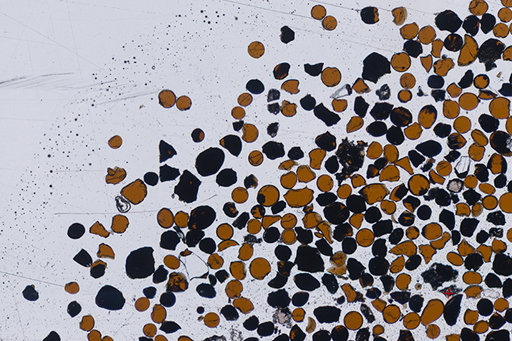2.7 Lunar regolith – a second sample
Your second look at lunar regolith is an orange-coloured sample that caused much excitement when it was found by Harrison Schmitt. The famous sample 74220 [Tip: hold Ctrl and click a link to open it in a new tab. (Hide tip)] (open this link in a new tab or window so you have the two pages to work with) is an unusual regolith sample that was discovered at Shorty Crater during the Apollo 17 mission to the Moon. The orange spheres are splatter from a volcanic eruption on the Moon and have the same age as the lunar mare basalts: 3.6 billion years.
Most of the sample consists of bright orange glass spheres, although a proportion of the glass has devitrified (i.e. become crystalline) and is now black where fine olivine needles and ilmenite feathers have grown. In chemical composition, the black former glass is identical to the orange glass.
So how did the orange regolith form on the Moon?
Take a moment to watch this video of an eruption on Earth, taken from the BBC webisite. Imagine what the area close to the volcano will look like once the eruption has finished and the lava has cooled. The ground will be covered in material with a range of sizes from solidified lumps of lava down to dust particles. This is what the astronauts gathered and recovered from the area around the small volcanic cone. The main difference is that the volcanism is still happening on Earth and over a few years the particles react with water from the atmosphere to form clay. The lunar orange regolith is over 3 billion years old but is perfectly preserved nevertheless.

